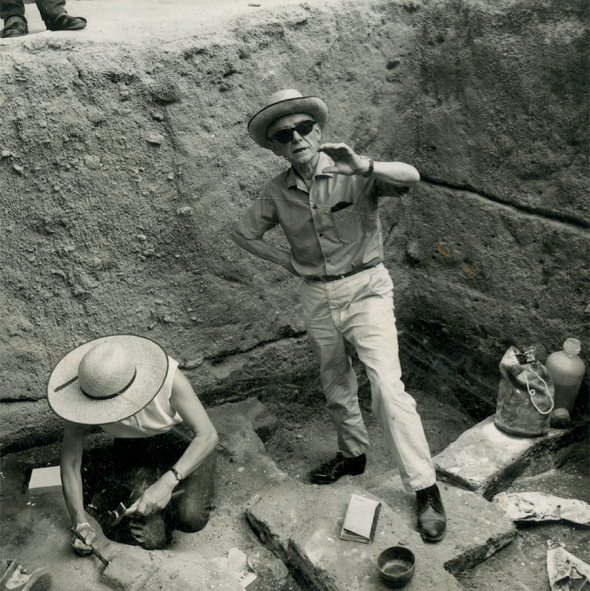History of the lab
With nearly 90 years of research activity in archaeomagnetism, the laboratory can claim to be the oldest laboratory of archaeomagnetism (and even paleomagnetism) in the world. It was founded by Emile Thellier in the early 1930s, with pioneering work on the magnetism of rocks and the deciphering of the magnetic signal carried by the thermo-remanent magnetization of archaeological materials that have been baked during their manufacture or use (their magnetic memory). The same principles apply to volcanic rocks which also carry a thermo-remanent magnetization. Emile Thellier and his wife Odette Costes-Thellier developed paleomagnetic analysis methods for determining directions and especially geomagnetic intensities that are still used in most paleomagnetic laboratories in the world (including the famous paleointensity method known as Thellier and Thellier, 1959). After this founding period (1930-1970), work in archaeomagnetism was continued, essentially in France, by Ileana Bucur, with whom we associate Jean-Claude Tanguy for his numerous works on the volcanic deposits dated to the last millennia from the eruptive activity of the volcanoes of southern Italy. For more than twenty years, archaeomagnetic studies have been conducted by Yves Gallet (IPGP), Agnès Genevey (LAMS) and Nicolas Warmé (Inrap). These three phases of activity have a link in the person of Maxime Le Goff, a retired CNRS engineer, who began his career with Emile Thellier (“my excellent collaborator” said E. Thellier) and ended it with Yves Gallet. We owe him the design and construction of the main measurement instruments, including the Triaxes magnetometers, used today in the laboratory, the data acquisition routines and more.
In recent years, the archaeomagnetism laboratory has moved from its historical location at the Observatoire du Parc Saint Maur to the National Magnetic Observatory in Chambon-la-Forêt (Loiret) and to the îlot Cuvier in Paris.
To know more about the history of the histoire de l’Observatoire du Parc Saint Maur (in french)




